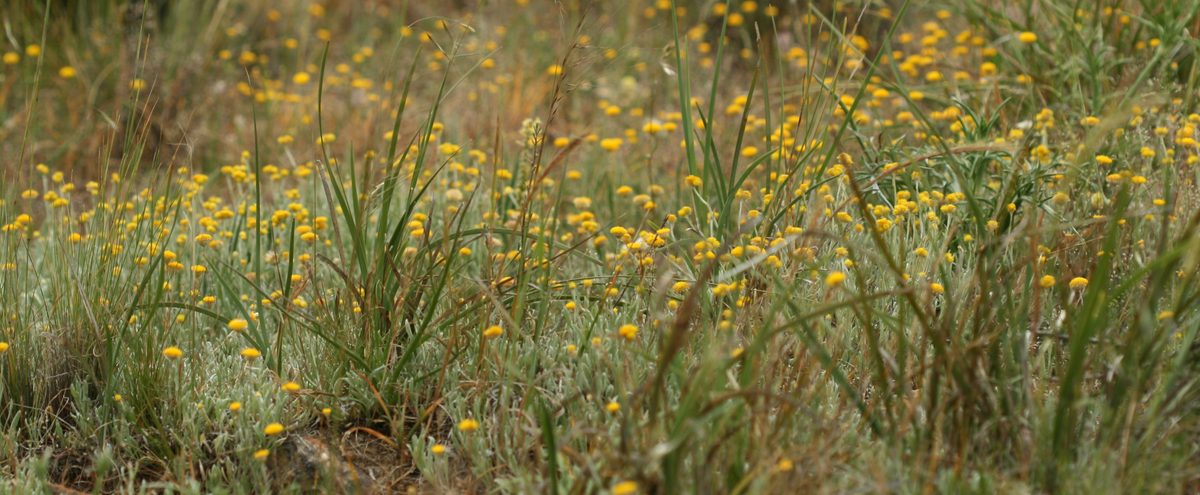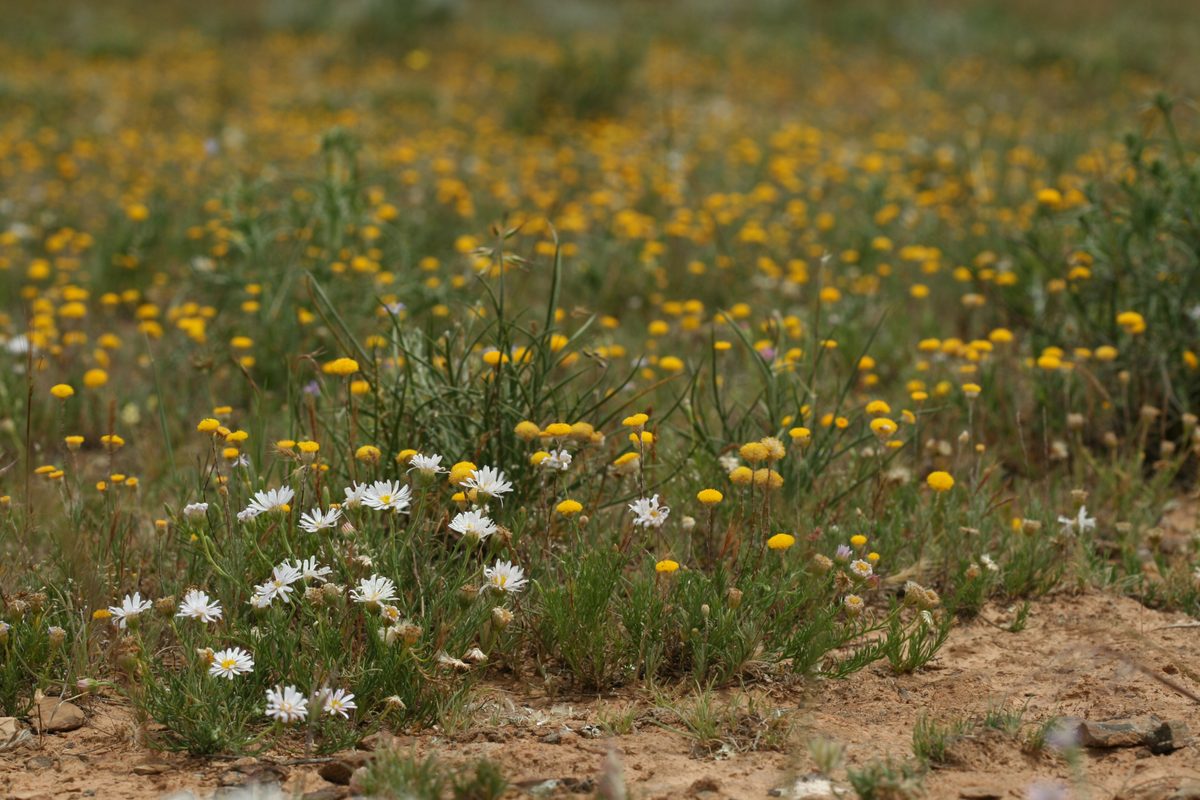
Iron-grass native grassland project
What are iron-grass native grasslands?
Native grasslands are vegetation communities dominated by grasses but with little or no trees or taller shrubs. They support a high diversity of species, with a mix of grasses plus a range of wildflowers including herbs, lilies, orchids and small shrubs. A high-quality grassland can be as diverse as a rainforest!
In South Australia, we have a unique type of native grassland which is characterised by the presence of a relatively large, spiky plant called iron-grass (Lomandra effusa and Lomandra multiflora ssp dura). The name is misleading because iron-grass is not actually a grassit’s a member of the asparagus family. This long-lived, hardy plant is the backbone of this grassland community.
Iron-grass native grasslands occur in the transition zone between the higher rainfall forests and woodlands and the drier Mallee areas. Intermingled with grassy woodlands, iron-grass previously occupied the area from the base of the eastern Mount Lofty Ranges across to the Mallee, and from Callington northwards to Terowie and beyond.
Our native grasslands mainly persist in the marginal country with annual rainfall around 250 – 350mm and most of them have been cleared and remaining areas are largely overgrazed. The good news is that these ecosystems evolved to cope with harsh conditions and can thrive in these areas when they are managed well. Native grasslands are diverse and perennial, so they are resilient and able to provide feed in dry areas, prevent erosion, build healthy soil and provide habitat for native fauna.
Why do Iron-grass Native Grasslands need protecting?
The Iron-grass Natural Temperate Grassland of South Australia is listed as a critically endangered ecological community by The Environment Protection and Biodiversity Conservation Act. Ecological communities are a naturally occurring group of native plants, animals and other organisms that interact in a unique habitat. Their characteristics are determined by environmental factors such as soil type, position in the landscape, altitude, climate and water availability.
Since European settlement, the way in which Iron-grass Native Grasslands are grazed has significantly changed. Contributing factors include the introduction of stock, installation of fencing, and increased kangaroo numbers due to the availability of water. In addition, the once widespread use of fire by First Nations has ceased.
Today, very little of this grassland community remains.

What is being done to protect Iron-grass Native Grasslands?
The Murraylands and Riverland Landscape Board is working with Mid Murray Landcare SA and land managers to improve the condition of the Iron-grass Native Grasslands.
This project aims to engage groups who have an interest or have knowledge in native grassland management including current land managers, ecologists and Traditional Owners. In particular, the project aims to support land managers who want to improve the health and resilience of their native grasslands so they can persist into the future.
Activities in this project include:
- raising community awareness about the importance of grassland conservation
- mapping native grasslands on private properties and providing species lists to landholders
- setting up and maintaining trials on grassland properties
- enhancing species diversity through supplementary seeding
- providing advice to land managers on best practice sheep management for dual production and conservation gains.
Timeline
This project started in 2018 and covered native grassland habitat from Peterborough down to Tailem Bend and was initially funded for 5 years by the Regional Landcare Program. This original project covered areas north to Peterborough which are now in the Northern and Yorke Landscape Board region.
From July 2023 the project is funded by the Murraylands and Riverland Landscape Board through landscape levies and focusses on native grasslands in the Murraylands and Riverland region only. We have been working with the Northern and Yorke Landscape Board to facilitate the continuance of this project in their region and to keep up the trials and relationships with local land managers. Our current levy funding extends to 2026.
This project is funded by the Murraylands and Riverland Landscape Board through funding from the landscape levies.
More information
Landscape Ecology Team
Units 5-6, Level 1 Sturt Centre, 2 Sturt Reserve Road, Murray Bridge, SA, 5253
08 8532 9100